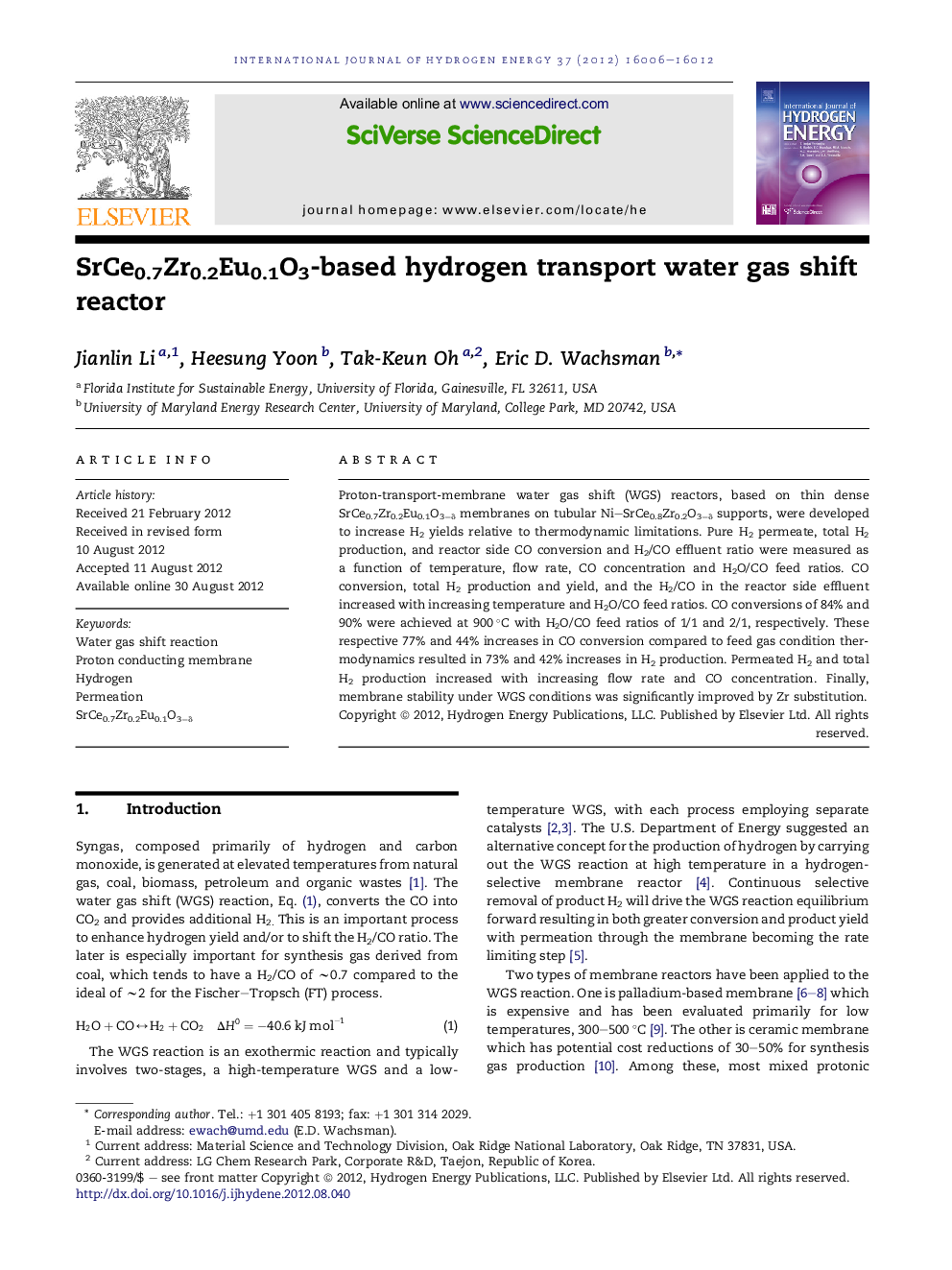| Article ID | Journal | Published Year | Pages | File Type |
|---|---|---|---|---|
| 1282129 | International Journal of Hydrogen Energy | 2012 | 7 Pages |
Proton-transport-membrane water gas shift (WGS) reactors, based on thin dense SrCe0.7Zr0.2Eu0.1O3−δ membranes on tubular Ni–SrCe0.8Zr0.2O3−δ supports, were developed to increase H2 yields relative to thermodynamic limitations. Pure H2 permeate, total H2 production, and reactor side CO conversion and H2/CO effluent ratio were measured as a function of temperature, flow rate, CO concentration and H2O/CO feed ratios. CO conversion, total H2 production and yield, and the H2/CO in the reactor side effluent increased with increasing temperature and H2O/CO feed ratios. CO conversions of 84% and 90% were achieved at 900 °C with H2O/CO feed ratios of 1/1 and 2/1, respectively. These respective 77% and 44% increases in CO conversion compared to feed gas condition thermodynamics resulted in 73% and 42% increases in H2 production. Permeated H2 and total H2 production increased with increasing flow rate and CO concentration. Finally, membrane stability under WGS conditions was significantly improved by Zr substitution.
► A water gas shift reactor was fabricated with SrCe0.7Zr0.2Eu0.1O3−δ. ► Experimental results were compared to that from thermodynamic simulation. ► CO conversion and H2 production significantly improved with the membrane reactor. ► The membrane reactor was stable under water gas shift reaction conditions.
